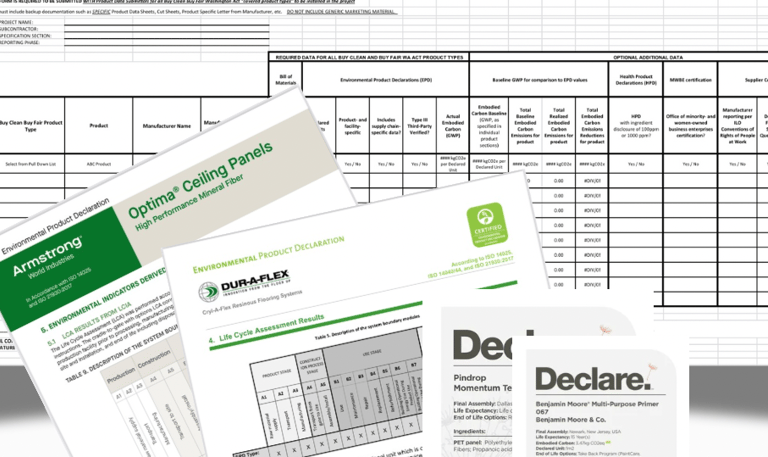Informed Material Selection
Monika Budniak
3/24/20251 min read
Informed Material Selection


Embodied carbon of building products accounts for approximately 11% of annual global Greenhouse Gas (GHG) emissions (*Architecture 2030). To assess this environmental impact, Life Cycle Assessment (LCA) is employed. Environmental impacts are categorized into four stages: Product Stage (A1-A3), Construction Stage (A4-A5), Use and Maintenance (B), End-of-life (C), and Circularity (D).
LCA results in a standardized and third-party document known as the Environmental Product Declaration (EPD), which summarizes the environmental impact of a product.


However, it is important to note that not all manufacturers provide Environmental Product Declarations (EPDs), and even when they do, these documents may not always be compatible. Other verification documents, such as the Living Building Challenge Criteria declaration and Health Product Declaration (HPD), can also be considered. Together, these documents contribute to the creation of a Transparency Label. The resulting Transparency Label supports informed material selection—something designers should advocate for and actively demand from manufacturers.
I strongly believe that, much like in the beauty industry, where clients seek “clean products”, a similar shift is occurring in interior design. Clients increasingly want assurance and transparency regarding the environmental impact of their choices. Therefore, it is essential to speak up about Life Cycle Assessment (LCA) and introduce key sustainability vocabulary to make these concepts more familiar and accessible.
For our projects, we provide clients with a "Clean Products" Report, which summarizes the sourcing details, including the manufacturer, whether the product has transparency verified by third-party certification, and its initial embodied carbon.
written by Monika Budniak, March 2025
